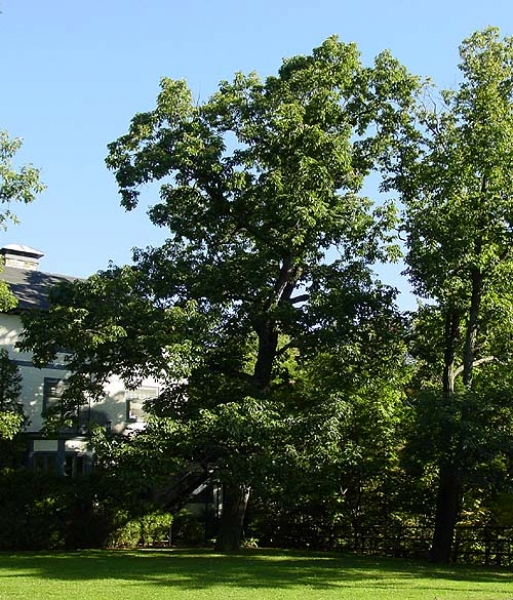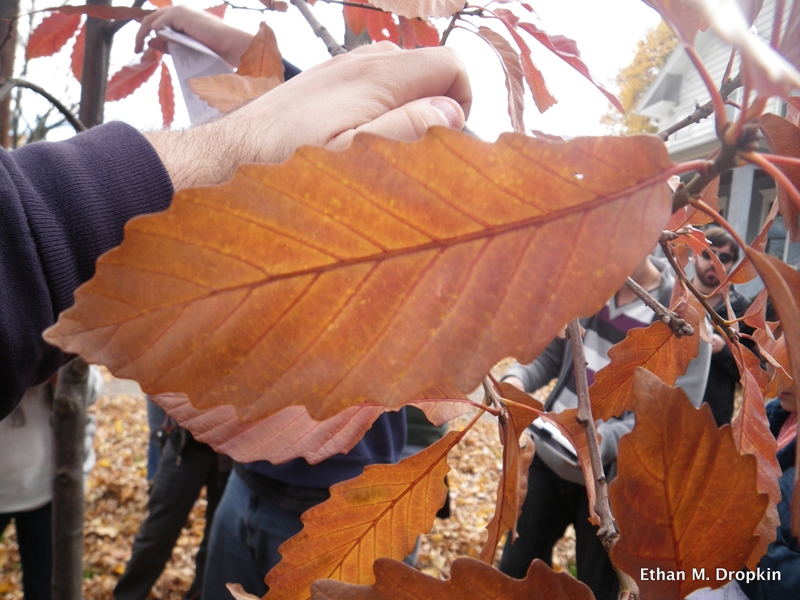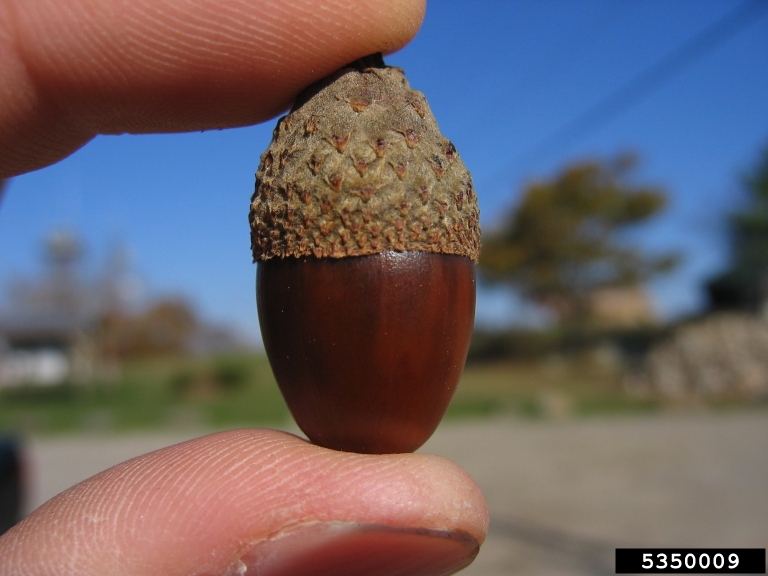Now live: The 2025 Canopy Report. Learn how Americans see trees. GET THE REPORT
Society of Municipal Arborists Announces its 2017 Urban Tree of the Year: Chestnut Oak
January 3, 2017

The 2017 SMA Urban Tree of the Year is native to much of the Eastern United States. Hikers from New York to Tennessee who ascend to dry ridges will often see the deeply furrowed, blocky barked trunks of chestnut oak (Quercus montana) (syn. Q. prinus). The bark is so distinctive, it may be the only ID feature one needs.
There’s growing interest in using chestnut oak in the urban environment because it is pH-adaptable, handles dry soils and periods of drought, has a beautiful mature form, requires minimal pruning, and tends to be free of major pests and diseases.
The common name “chestnut oak” owes to the leaves looking like those of American chestnut (Castanea dentata) and indeed both are members of the beech family, Fagaceae. Other common names for chestnut oak include rock oak, rock chestnut oak, or mountain oak—referring to its customary sighting in dry, rocky soils on ridgetops, where it has a competitive advantage. However, if chestnut oak is open-grown in the moist, well-drained soil that all trees dream about, it will be significantly bigger than its scrappy ridgetop cousins. Typically it reaches 50 to 70 feet (15 to 21 m) tall and almost as wide. It’s hardy in USDA Zones 4 to 8 and prefers full sun.
Dublin, Ohio Forestry Assistant Jocelyn Knerr nominated the tree. “We started using chestnut oak in Dublin in 2009 as a street tree,” she says. “We have planted it to replace some of our ash trees as well as using it in greenspaces throughout the city. It has adapted well to the alkaline soils of Dublin and it seems to handle the salt well. The pyramidal shape is an added plus in its young age because it allows for our snowplows and garbage trucks to pass without destroying any branches.”
Frankfort, Kentucky Urban Forester Lorri Grueber was thrilled to learn that a native tree was named SMA Urban Tree of the Year. “Many times, especially in urban settings, we turn to non-native species and then 10-20 years down the road we regret doing so, due to their invasive qualities,” she says. “With Q. montana we won’t have those regrets.” Grueber recommends giving chestnut oak ample room to spread its branches—for example, in large tree lawns, wide medians, or large parking lot beds. “You may also consider using structural soil to guide and protect the root system,” she says. In terms of chestnut oak’s ornamental features, Grueber says, “Its habit provides an inviting canopy, it has glossy leaves in the summer, and it affords fabulous winter interest with the rugged bark.”
Westerville, Ohio Parks and Urban Forest Manager Matt Ulrey is also a fan. “Chestnut oak adds to the variety of oak options for the urban setting,” he says. “It has shown itself to be tolerant of the variety of harsh conditions placed on a street tree. At maturity, it is very stately looking with its well branched structure, and sometimes it even provides a nice red fall color; however, its fall color is most commonly a yellowish brown to orange-yellow.”
The SMA recognizes the underutilized, attractive, and extremely useful chestnut oak for its service to urban forests and encourages its use when matched appropriately to site and as part of a diverse urban tree inventory.
You can see the full list of past SMA Urban Tree of the Year winners on the SMA website, www.urban-forestry.com.


